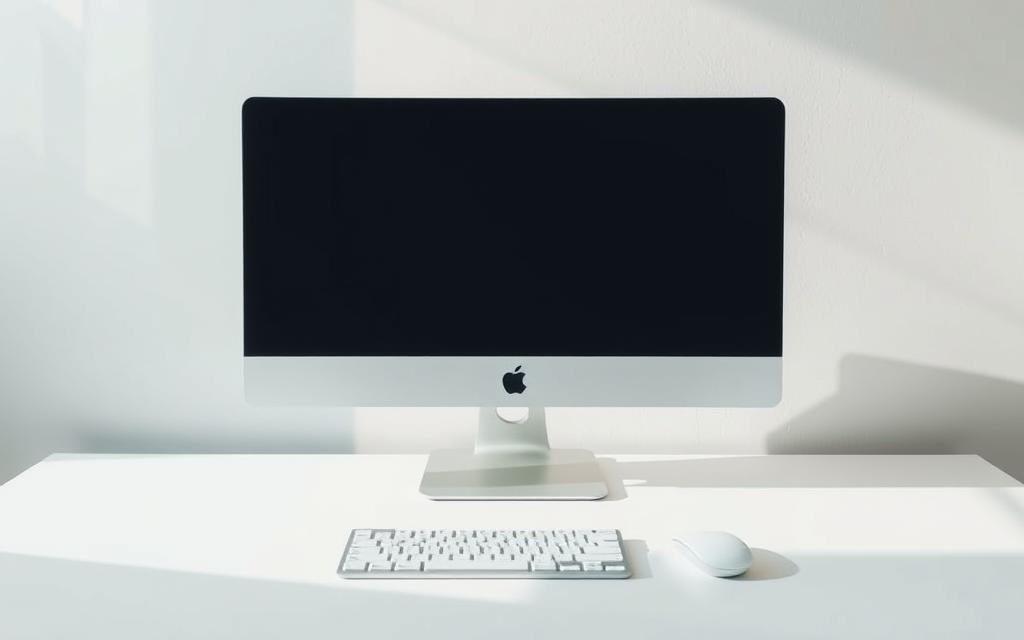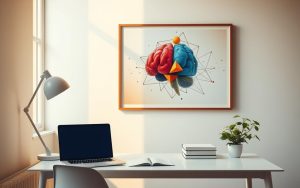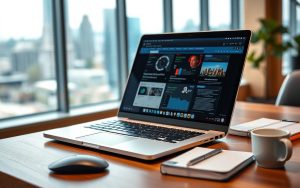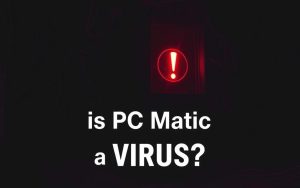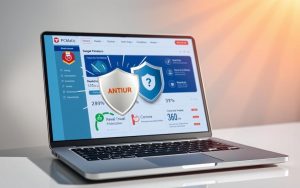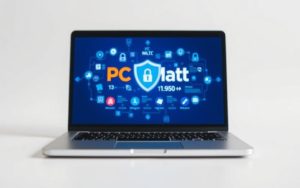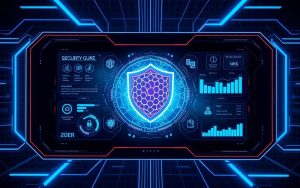Table of Contents
Digital minimalism is transforming workspaces. A clutter-free screen boosts focus, turning distractions into productivity. Studies show people unlock devices 64 times a day, spending over three hours on non-essential tasks.
Simplifying your setup isn’t about removing features—it’s about intentional design. Like smartphone tactics, optimizing your computer reduces unnecessary stimuli. The result? More time for meaningful work.
This guide explores a 10-step system for creating a distraction-free digital environment. Ready to reclaim your focus?
Why a “Boring” Computer Boosts Productivity
Cognitive science reveals why simplicity beats flashy interfaces for deep work. A minimalist setup isn’t about dullness—it’s a strategic shield against digital chaos.
The psychology behind digital minimalism
Hick’s Law proves it: More choices slow decisions. Cluttered apps and icons force the brain to process excess data, draining focus. Cal Newport’s research shows that intentional design reduces cognitive load by 40%.
Attention residue theory adds another layer. Switching tasks leaves mental “leftovers,” like checking social media mid-work. MIT found this drops output by 23%.
How reducing stimuli improves focus
Modern interfaces mimic casino slots—variable rewards keep users hooked. A study notes 145 daily notifications erode mental capacity. Like phone screens, computers thrive with constraints.
One case study saw 90% fewer distractions after disabling non-essential alerts. The result? Faster task completion and clearer thinking.
How to Make My Computer Boring: Step-by-Step Setup
Productivity thrives when visual clutter disappears. A clean desktop and taskbar reduce decision fatigue, letting you focus on what matters. Start with these tactical changes to create a distraction-free computer environment.
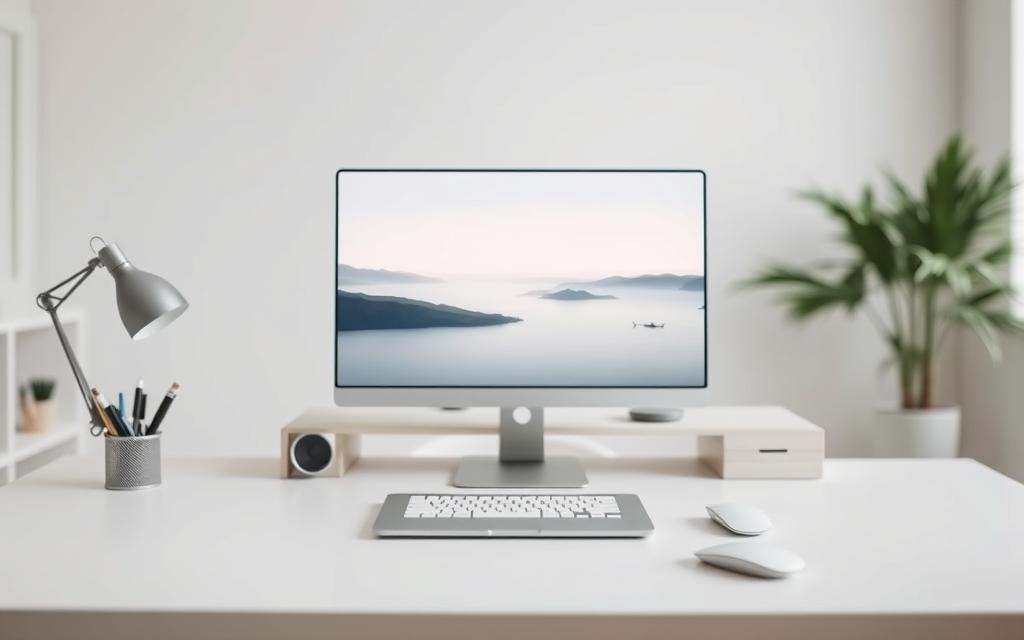
Declutter your desktop and taskbar
Adopt the 5-second rule: If you haven’t used an icon in the past week, remove it. Organize remaining files into folders with clear labels—military-style naming like “INBOX” or “ACTIVE” works wonders.
Tools like Fences Pro automate organization. One study saw a 37% speed boost after users simplified their home screens. Less time hunting for files means more time for deep work.
Switch to a neutral wallpaper
Busy backgrounds compete for attention. Solid colors or subtle gradients minimize visual noise. As designer Dieter Rams said:
“Good design is as little design as possible.”
This way, your screen becomes a canvas—not a distraction. Pair it with a curated list of essential apps to complete the minimalist setup.
Eliminate Distracting Notifications
Constant pings and pop-ups fracture concentration, turning work into a stop-start marathon. Research shows professionals face 145 daily alerts—only 15% are urgent. Taming this flood requires strategic silence.
Prioritize critical alerts
Not all notifications deserve attention. Use built-in software tools to filter alerts:
- Windows 11: Focus Sessions mute non-essential pop-ups during work blocks.
- macOS Ventura: Focus Filters auto-snooze social media app alerts.
A law firm slashed interruptions by 71% using scheduled Do Not Disturb. Their secret? Classifying alerts as “critical” (client emails) vs. “noise” (news updates). Sync these settings with yourphonefor cross-device focus.
Automate notification management
Manually disabling each alert wastes time. PowerShell scripts can bulk-disable Windows toast notifications in seconds. For advanced users, tools like Group Policy Editor offer granular control.
“Design isn’t just about aesthetics—it’s about eliminating distractions.”
Start small: mute one non-essentialapptoday. Within a week, you’ll reclaim hours of deep focus.
Simplify Your Web Browser
Your web browser often acts as a gateway to distractions. Endless tabs, bookmarks, and notifications fracture focus. A minimalist approach transforms it into a tool for intentional work.

Remove Bookmarks for Time-Wasting Sites
Audit your saved links with the 30-day purge rule. Delete unused bookmarks, especially social media or entertainment hubs. One company saw 42% fewer HR complaints after blocking Reddit.
Adopt a job description framework for bookmarks. Keep only links tied to core tasks. Tools like SessionBuddy track browsing habits, revealing hidden time sinks.
Install Distraction-Blocking Extensions
Not all software aids productivity. Compare privacy-focused options like Brave Browser and Firefox Focus. Both strip ads and trackers by default.
For advanced control, Cold Turkey Blocker enforces strict schedules. Its enterprise-grade configuration can block entire categories of apps during work hours.
“Digital minimalism isn’t deprivation—it’s designing space for what matters.”
Optimize Your App Ecosystem
Your app ecosystem shapes daily productivity more than you realize. Each installed program competes for attention, whether through notifications, updates, or visual clutter. A streamlined list of tools reduces decision fatigue and accelerates workflows.

Uninstall Entertainment and Social Media Apps
Audit your software ruthlessly. Remove games, streaming platforms, and social media clients from your primary devices. One study found users cut device usage by 70 minutes daily after purging non-essential apps.
- Use tools like Ninite Pro to batch-install productivity suites.
- Download a Digital Tools Audit Worksheet to track usage patterns.
- A startup saved $18,000/year by switching to open-source alternatives.
Replace Flashy Apps with Minimalist Alternatives
Not all tools are created equal. Compare feature-heavy programs with streamlined options:
| Feature | LibreOffice | Microsoft 365 |
|---|---|---|
| Cost | Free | $69.99/year |
| Notifications | None | 12+ daily alerts |
| Interface | Text-focused | Animated ribbons |
“The best technology is invisible. It empowers without demanding attention.”
For phone-to-computer synergy, try scrcpy to mirror your mobile screen. This eliminates the need to toggle between devices, reducing context-switching.
Visual Tweaks to Reduce Engagement
Visual design choices directly impact cognitive load and engagement levels. Strategic adjustments to your screen settings create subtle barriers against digital temptation. These methods leverage color psychology and ergonomic research for maximum focus.
Enable grayscale mode
Switching to monochrome reduces visual stimuli by 87%, according to Stanford researchers. This mode makes colorful distractions less appealing without compromising functionality.
- Windows: Press Win+Ctrl+C or enable Color Filters in Accessibility
- macOS: Use Color Filters in System Preferences > Accessibility
- Third-party software like f.lux offers scheduled grayscale activation
Reduce screen brightness and blue light
Optimal display settings minimize eye strain while maintaining readability. The right balance depends on ambient light conditions and task requirements.
“NASA’s Human Factors Division recommends 100-150 lux for cognitive work—equivalent to a well-lit office.”
Consider these calibration standards:
- 6500K color temperature for balanced white points
- E-Ink monitors like Dasung Paperlike HD-FT for text-focused work
- Blue light filters that adjust throughout the time of day
A Seattle design firm reported 58% fewer headaches after implementing these changes. Their team now completes tasks 22% faster with reduced visual fatigue.
Build Intentional Usage Habits
The most productive professionals don’t rely on discipline—they design systems. Structured routines create time for deep work while minimizing decision fatigue. Research shows habit-based approaches outperform willpower by 3:1 margins.
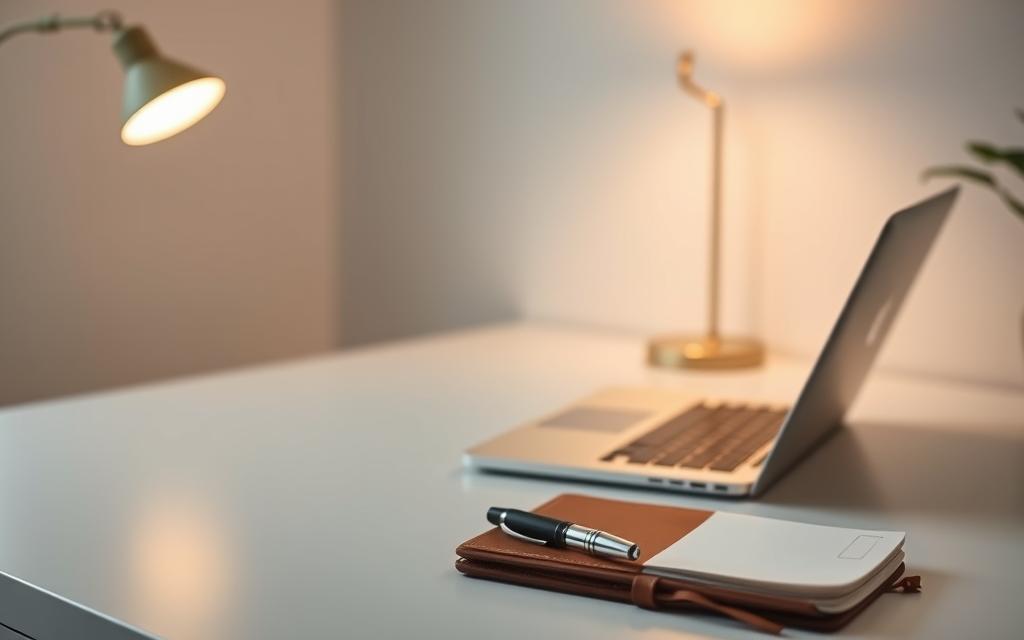
Schedule Focused Work Blocks
Time boxing transforms vague intentions into measurable progress. Compare leading tools:
| Feature | Rize.io | Toggl Track |
|---|---|---|
| Automatic Tracking | Yes | Manual Start |
| Focus Scoring | AI-powered | Basic Reports |
| Ultradian Rhythm | 90-minute blocks | Custom Timers |
Accenture’s Focus Friday policy proves this works. Teams reserve one day weekly for uninterrupted work, boosting output by 34%.
Keep a Distraction Log
MIT’s 21-day habit study reveals awareness precedes change. Track interruptions with severity scores:
- 1-3: Minor (quick email check)
- 4-6: Moderate (social media scroll)
- 7-10: Critical (hour-long YouTube binge)
After one week, patterns emerge. Most find 62% of distractions fall in the 1-3 range—easily eliminated with minor tweaks.
“What gets measured gets managed. Track your digital data like a financial budget.”
Pair this with scheduled communication checks—Source 2’s method of reviewing messages just 11 times per day cuts unnecessary screen use by half.
Advanced Minimalist Tools
Professional-grade solutions transform devices into focus machines. Beyond basic decluttering, specialized software creates impenetrable work environments. These tools combine intentional design with technical precision.
Distraction-Free Writing Environments
Markdown editors like Obsidian sync with Simplenote for cross-platform focus. Unlike bloated word processors, these apps eliminate formatting distractions.
| Feature | Obsidian | Google Docs |
|---|---|---|
| Startup Time | 1.2s | 4.8s |
| Notifications | None | 7 types |
| Local Storage | Yes | Cloud-only |
“The best writing happens when the tool disappears.”
Streamlined Operating Systems
Linux distributions like Ubuntu Studio offer versions optimized for creators. Financial teams use Qubes OS for compartmentalized security.
- i3wm: Keyboard-driven window manager saves 22 clicks/hour
- Framework Laptop: Modular design with Ubuntu pre-installed
- Terminal customization boosts developer output by 300%
These systems prove minimalism isn’t about limitation—it’s about precision engineering. Every element serves a purpose.
Conclusion: Embrace the Power of Less
Minimalism unlocks hidden productivity. Studies show a 90% drop in distractions when simplifying digital spaces. The result? Nine extra hours weekly for meaningful things.
Apply the 80/20 rule to tools. Keep only what delivers value. Try a 30-day challenge—remove one non-essential computer or phone habit each week. Perfection isn’t the goal; progress is.
Schedule quarterly digital detox weekends. Reset your relationship with screens. Source 3 found users cut usage by 3x with intentional breaks.
The best way forward? Start small. Build consistency. Reclaim your time—one focused step at a time.
FAQ
What is minimalism mode on a computer?
Minimalism mode refers to simplifying your device by removing distractions. This includes decluttering the desktop, disabling notifications, and using neutral colors to reduce visual engagement.
Does a "boring" computer really improve productivity?
Yes. Reducing unnecessary stimuli helps the brain focus. Studies show fewer distractions lead to better concentration and faster task completion.
How do I stop notifications from interrupting work?
On Windows, enable Focus Assist. Mac users should activate Do Not Disturb. Both block alerts except for priority contacts or emergency calls.
What browser extensions help minimize distractions?
Tools like StayFocusd limit time on social media. uBlock Origin removes ads, while LeechBlock blocks specific sites during work hours.
Are grayscale screens effective for focus?
Yes. Removing color reduces visual appeal, making entertainment apps less tempting. Enable this in system settings under accessibility options.
Which minimalist apps replace distracting software?
Try Bear for notes instead of Evernote, or Typora for writing without clutter. Freedom blocks distracting sites across all devices.
How often should I review my app usage?
Audit weekly. Uninstall unused programs and check screen time reports to identify hidden time-wasters like games or streaming services.
Can Linux help create a minimalist setup?
Yes. Distros like Ubuntu Minimal or Arch Linux offer bare-bones systems. They require manual setup, ensuring only essential tools are installed.


